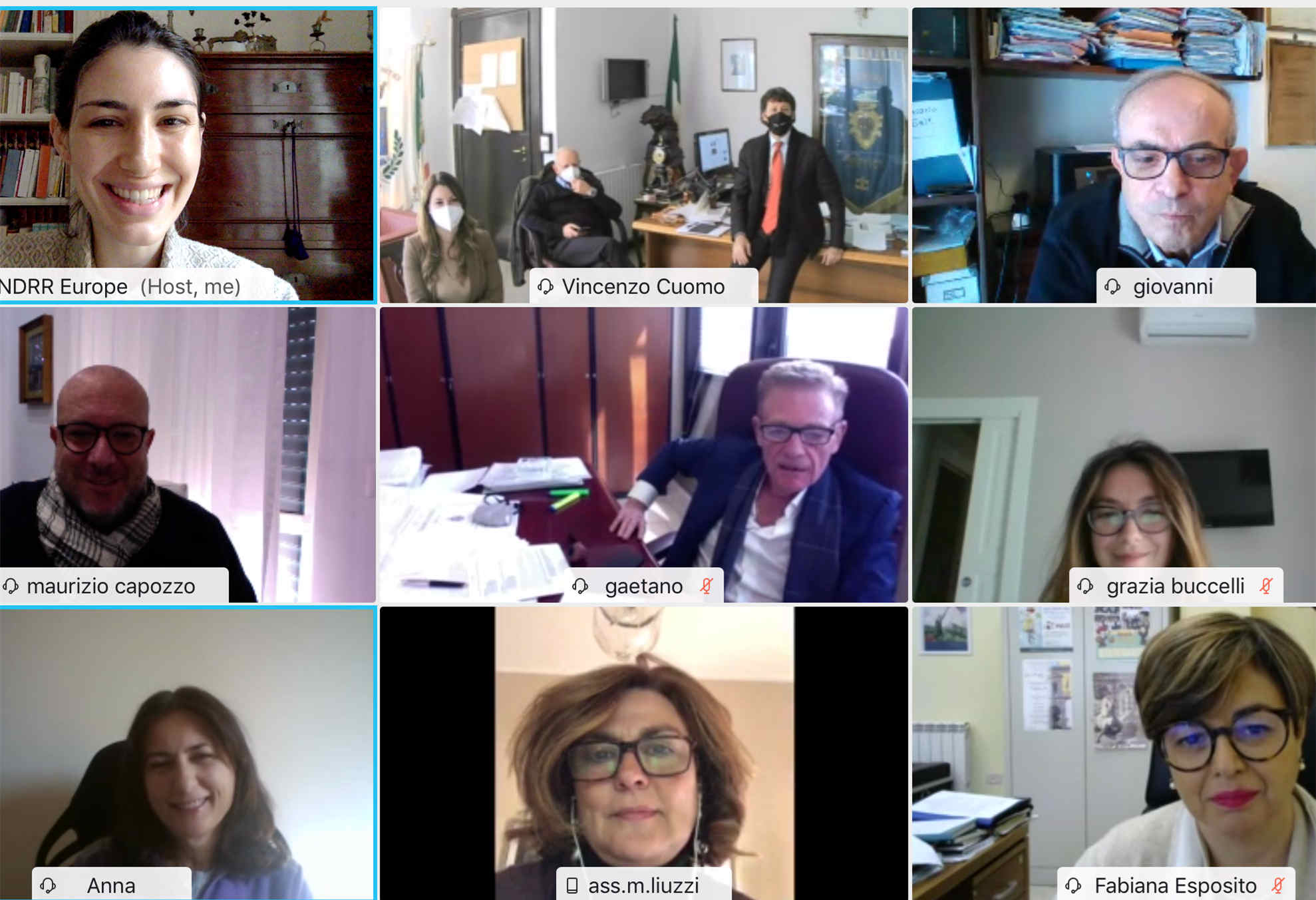The City of Portici Joins the MCR 2030 Initiative

Local Governments are at the forefront of disaster risk reduction. When disasters strike, local authorities need to react as the first line of response and relief. The coronavirus outbreak has shown how municipalities are first and most exposed to the challenges, and the impacts that disasters entail. The role of local and regional governments needs to be broadly understood and strengthened. To this end, UNDRR offers its support to countries and local authorities for developing National as well as Local DRR plans, and under the umbrella of the Making Cities Resilient 2030. Initiative is engaging with several cities in Europe and Central Asia to pursue this goal.
In Italy, the city of Portici, in the province of Naples, is one of the most densely populated towns in the world, situated below the still active volcano Vesuvius, whose famous eruptions led to past and well-known catastrophes as well as one of the world’s most visited archaeological sites: Pompei. Portici, who is not willing to become the next most visited archaeological site, but the most resilient city, joined the Making Cities Resilient 2030 Initiative (MCR2030) to assess its preparedness to disaster risks, with the willingness to develop its local DRR strategy aligned to Sendai Framework requirements.
The southern Italy municipality has initiated efforts to adopt holistic strategies for disaster risk reduction, following the resilience assessments carried out with UNDRR support, using UNDRR Disaster Resilience Scorecard for Cities, organized around 10 Essentials for resilience. The strategic tools offered by MCR2030 are helping Portici addressing issues of local governance, urban risks along with the most recent and urgent pandemic challenges.
Among the issues emerged during the virtual workshops - conducted on 18 and 25 November, the following ideas on improving risk management occurred:
the necessity to address cascading risks;
the need to have in place a proper strategy to manage solely pandemic risk;
the reinforcement of local health boards so as not to overload regional hospitals during health emergencies;
the improvement of communications with highroads and rail lines representatives, for better coordination during disasters
the upgrade of all educational facilities to earthquake-proof
To be aligned to European smart city standards, Portici is going to develop a comprehensive and technological risk communication net, designed with keeping in mind the most vulnerable groups’ needs. The city is also in the process of implementing a new urban master plan, that is going to include provisions for DRR such as the implementation of web dock in support of the waterfront; soil sealing; widespread early warning systems, etc. At the end of the workshop, a high school director stated that more than results, the process itself was the most valuable achievement.
Source:United Nations Office for Disaster Risk Reduction - Regional Office for Europe






